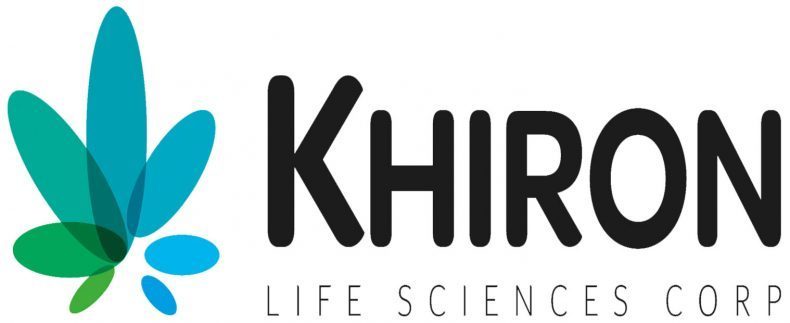The world is changing, and women are the ones changing it. Classic methods of advertising to women just don’t work anymore, and worse, make you seem outdated and out of touch.
According to a 2017 study by BDS Analytics, 45 percent of cannabis users are women and that number is quickly rising. It could be even higher since according to Van Der Pop’s Women & Weed survey, 66 percent of women hide their cannabis use. No one seems to be able to agree on the exact figure, but experts do agree that women are the fastest growing market in the cannabis industry.
Harvard Business Review reported in their 2009 article “The Female Economy” that worldwide, women control nearly $30 trillion in household spending and make the majority of purchasing decisions in the family. If they’re not directly purchasing something with their $18 trillion in collective income, they are influencing others’ purchasing decisions. Often, they are the primary caregivers in their family circles, making them responsible for buying things for their children, or on behalf of their elderly loved ones.
Gender can often be a marketing blind spot, even though it’s the biggest influence on consumer behavior, according to a 2017 report from The Journal of Business and Management. Now that the number of women working in the cannabis industry is at 36 percent and rising, they are using their experiences and perspectives to market effortlessly to women, and it shows. If your brand is ignoring this powerful demographic, you’d better catch up quick.
Why do women use cannabis products?
Women are into cannabis wellness, but like to get high, too.
In Headset’s 2019 report entitled “What Women Want in Cannabis: Shopping Trends Among Female Cannabis Consumers,” some of the most popular cannabis products among women are still classics like flower and pre-rolls, but women are more likely than men to try capsules, topicals and sprays. They are fascinated by the concept of CBD helping them with issues like menstrual cramps, body and muscle pain, and even sensitive skin, but enjoy products with THC as well.
In general, women’s purchases in the cannabis industry end up being more centred towards wellness, but it’s not all about spa treatments and relaxing.
Sex sells, but not in the way you think.

There has been a growing interest in using cannabis and CBD for women’s sexual health. Researchers haven’t quite caught up with the science yet, but researchers at the Center for Sexual Health at Saint Louis University think that cannabis and CBD can help women overcome pain and anxiety during sex. Foria Wellness is a brand that sells CBD suppositories and lubricants that help women have a better sex life. Not only are their products seemingly effective, but they provide loads of education to their audience and work with influencers to build their community.
Beauty is Pain.
Being a woman is hard. Or at least, painful. Between walking in heels, getting in an intense workout, and feeling the stress of general life, women end up with quite a few aches and pains. Topicals and bath bombs seem to be leading the way in this area. Celebrity stylists have been using CBD lotions on the feet of starlets before a long night on the red carpet, and more brands are marketing their products to fitness buffs.
Market to specific kinds of women.Skincare is another burgeoning market. Van Der Pop reports that 60 percent of women are interested in cannabis skin care. Again, the science hasn’t quite caught up, but anecdotally it has been shown to have anti-bacterial and anti-inflammatory properties when applied to the skin. Women with psoriasis, eczema and other skin troubles are also finding relief with CBD. A bunch of large retail brands have already jumped on the bandwagon and indie brands are starting to pop up as well.
Life is Stressful.
A report from Spate and Landing International found that there has been a 24 percent increase in consumer interest in anxiety. Young people these days are under more pressure than ever, and they are turning to their products to solve it. The American Psychological Association says that 12 percent of millennials are officially diagnosed with an anxiety disorder, so it’s no surprise that anxiety and depression are the fastest-growing search terms associated with CBD.
Does this make me a bad mom?
Being a mom is stressful, and a lot of moms have been toking since before their kids were born, so after the kids are asleep they relax on the porch with a joint. It’s right for them, but the stigma is still there and they can feel it. Over 70 percent of women believe that there is still a stigma attached to cannabis use. The answer is not only marketing to Mary Jane moms but also using marketing to help end the stigma around cannabis consumption.
What do women look for in cannabis brands?
Women use cannabis for different reasons than men, so it makes sense that they would look for different things in a cannabis brand.
“Traditionally, marketing weed to men has either been about projecting fantasy, or appealing to the everyday guy that men feel like they could smoke a bowl with,” Mary Pryor, CEO and co-founder of Cannaclusive, told AdAge. “But women want to know what gets the job done without having to do too much work to know what we’re going to get.”
That means lots of education and support at the customer level. Women are used to a higher level of customer service and will most certainly take their business elsewhere if they feel they aren’t being heard or served effectively.
Women buy things that make them feel good, or items that help them express themselves, so aesthetic is important, too. There was a time in cannabis culture when most cannabis accessories had flames, or skulls, or aliens, and while that may appeal to some women, the majority want a more feminine and streamlined look. Brands like Van Der Pop offer modern designs that will readily fit into the consumer’s decor, and Lord Jones packages their CBD oil with an ornate style that invokes more of a luxury perfume brand than a cannabis product. Women are looking for a product that will look good on their shelf or in their homes.
The Secret? Know Your Audience
The first rule of marketing to women is: don’t market to women.
The absolute best way to reach women is to create authentic content for women, by women, addressing their specific concerns.At least, not women as a mass, general group. Market to specific kinds of women. Like cannabis, women come in many beautiful and exotic varieties, each one more interesting and lovely than the last, and each with their own values and shopping habits. For example, the wellness guru will have different needs from the sun-weathered gardener, who will have different needs from the stressed-out mom with a sore back.
Here are some time-tested generalizations that could help you out, though. The Journal of Business and Management reports that women are more likely to appreciate finer distinctions and enjoy more of a conversational style dialogue. When it comes to problem-solving, women care more about how a problem is solved, and like sharing and discussing it. Similarly, shopping is also a process where women tend to enjoy more interaction and take more pride in finding the best bang for their buck and the best product for them.
According to Bloomberg, you should study women as if they were a foreign market. All groups of women have their own culture, values and even language. The key here is to get to know each and every one of these personas so that you can create a targeted strategy to reach them specifically.
The absolute best way to reach women is to create authentic content for women, by women, addressing their specific concerns. Create a community for them. Formulate products for them that actually work. Hire them, listen to them, hear them and they will choose your brand every time.






































